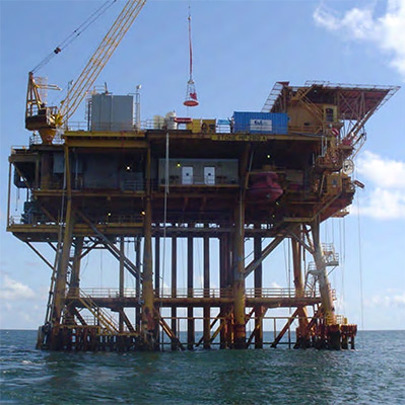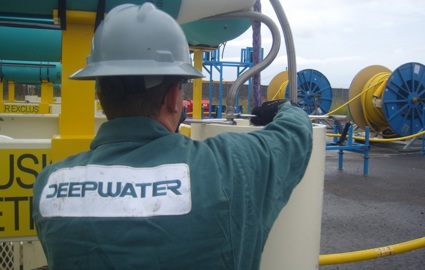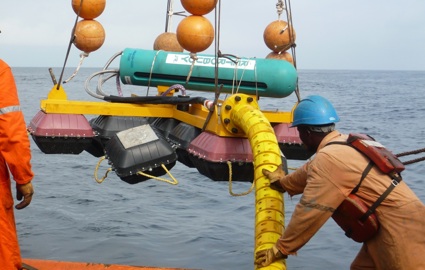Garden Banks 191 A
Impressed current cathodic protection anode sleds retrofit on a GOM fixed platform
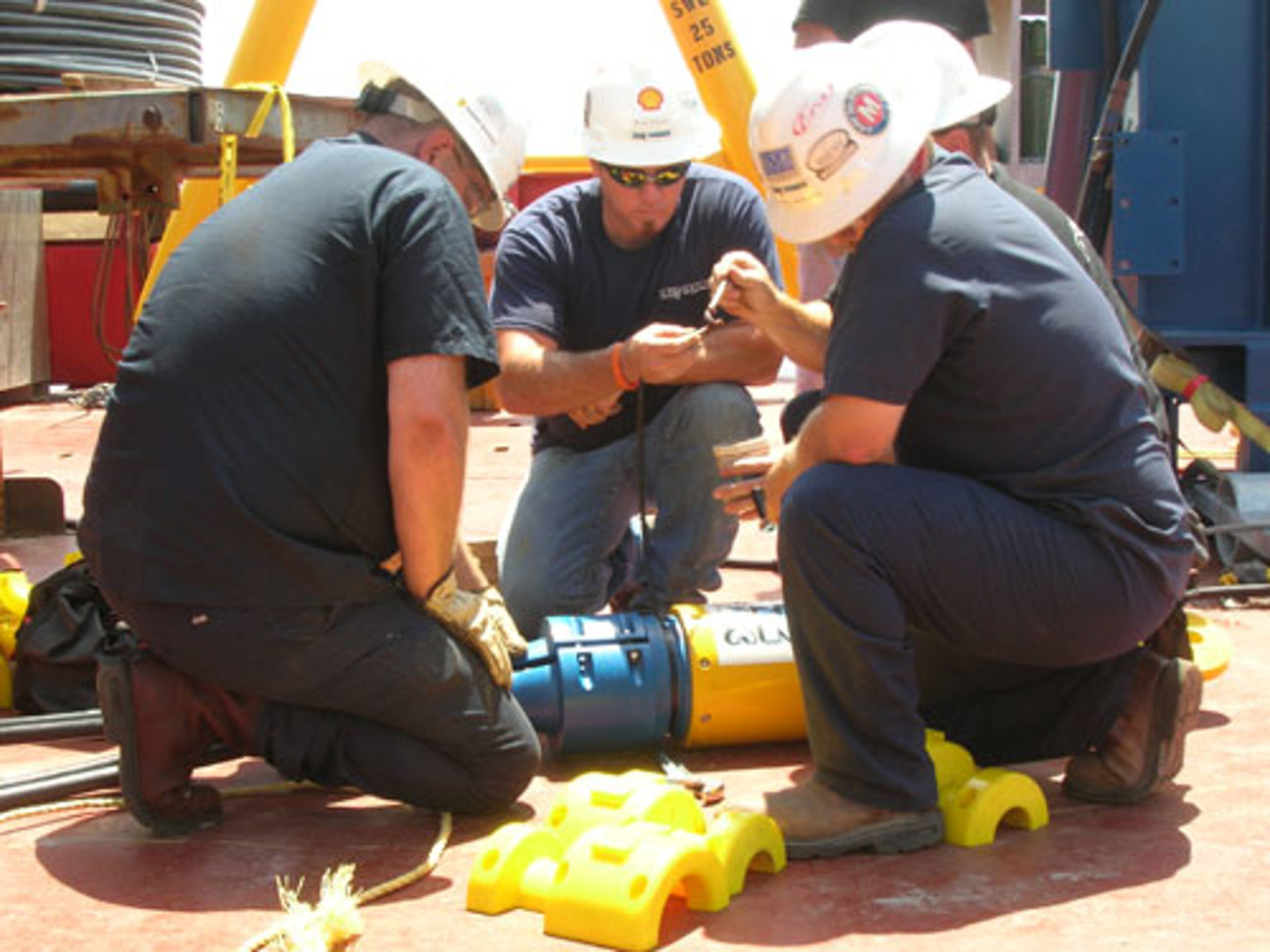
Two RetroBuoy™ systems installed to protect a large fixed platform in 720 ft. water depths
Deepwater Corrosion Services, working in conjunction with Deep Down Inc. and Oceaneering Inc., performed a cathodic-protection (CP) retrofit of a fixed platform in two days. This Gulf of Mexico platform is a large 4-leg, 8-skirt pile fixed jacket, located in 720 feet of seawater.
The retrofitted CP system consists of:
• 2 RetroBuoys™ (impressed current anode sleds)
• Double-armored power cables (1,200 feet long)
• 2 topside marine transformer-rectifiers rated at 450 Amps
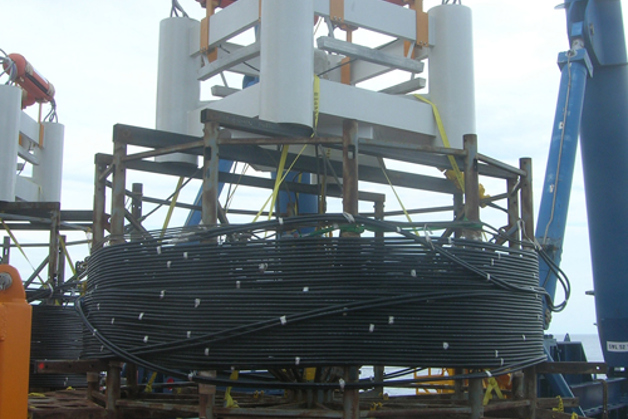
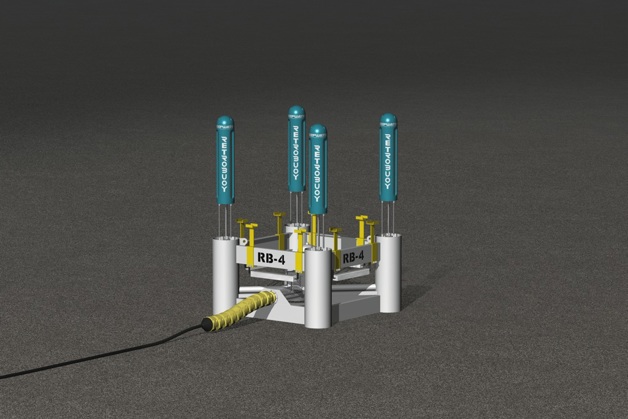
Installation time: 19 hours
The two RetroBuoys™ are designed to be deployed on the seabed 150 to 400 feet outboard of the base of the jacket; the double-armored power cables connect each RetroBuoy™ to a topside marine transformer-rectifier rated at 450 Amps. The cable is routed to the surface through a spare J-tube.
The installation was carried out aboard Oceaneering’s 315’ X 59’ dynamically positioned intervention vessel, the Performer. Deep Down managed the RetroBuoy™ installation utilizing hydraulic Horizontal Drive Units (HDUs) and reels. Deep Down also supplied installation hardware that included a combination cable-pulling head/armor termination body, custom junction box and a spreader bar for simultaneous RetroBuoy™ deployment. This installation hardware, combined with project management and planning, was the key to an efficient, safe deployment.
Each RetroBuoy™ was mounted atop a horizontal reel (2 total). With the RetroBuoy™ secured, the reel was rotated to spool the power cable. The end of each RetroBuoy’s™ cable was capped with a "bullnose" pulling head. Prior to the cable pull, the J-tube was drifted with a dummy pulling head to ensure there was no major blockage; this also confirmed the actual pulling head would proceed without interference. For deployment, both pulling heads were bolted together, thereby requiring only one pull. A wire from a platform-mounted tugger was routed down and out the J-tube and connected to the RetroBuoy™ pulling head aboard the vessel. (In essence, the platform was directly connected to the dynamically positioned vessel.) As the HDUs played out power cable, the platform tugger played out wire rope until the pulling head emerged from the top of the J-tube. The ROV is stationed concurrently at the seabed to monitor the cable touchdown area and J-Tube entry. The pulling head was secured at the top of the J-tube by the platform crew.
Both RetroBuoys™ were over-boarded simultaneously utilizing a spreader bar, and lowered to the target box #1 on the seabed. RetroBuoy™ #1 was released from rigging. The vessel then lifted RetroBuoy™ #2 approximately 100 feet above the seabed and used DP to move around the structure to target box #2. RetroBuoy™ #2 was then lowered and de-rigged. This concluded subsea operations.







